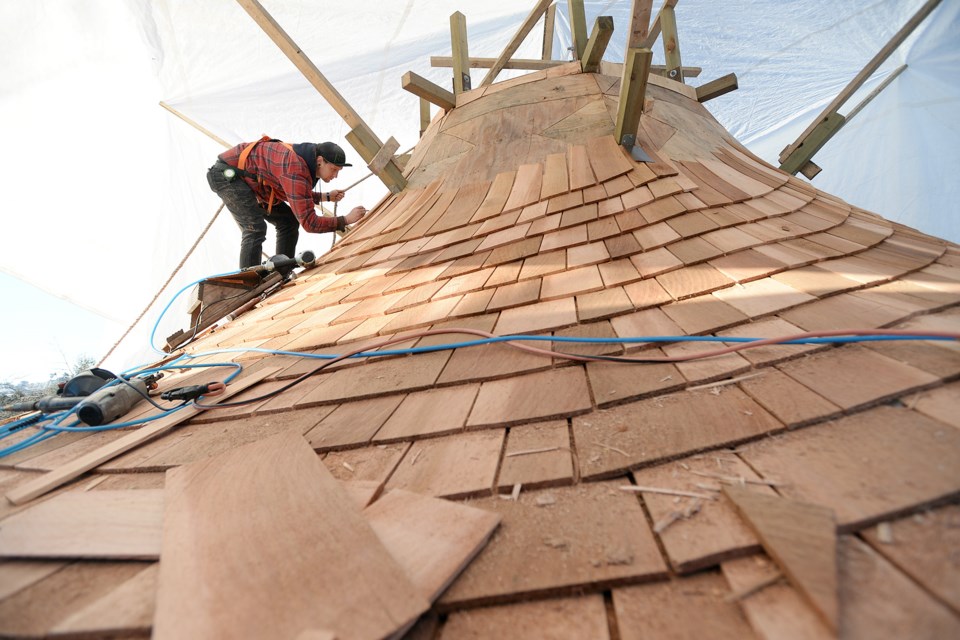As workers put the finishing touches on the new aboriginal carving pavilion in the parking lot behind the ice rink at Britannia secondary school, Britannia Community Centre board member Scott Clark says the facility needs to part of a broader strategy to engage aboriginal people at all the city’s community centres.
“It’s a great idea, and the people who spearheaded it are to be commended for their efforts,” said Clark, who is the society’s only aboriginal board member. “To take the next step, it needs dedicated programing to sustain it.”
Carving is part of aboriginal people’s cultural DNA, Clark said, so there should be no shortage of interest in using the facility. “You walk around the neighbourhood and you see a lot of aboriginal carvers sitting on the street doing their thing. Those guys all have stories to tell too.”
According to the Urban Aboriginal Peoples Study, Vancouver is home to more than 40,000 aboriginal people. Those people don’t just live in the city’s East Side, they live in each of the 27 neighbourhoods that have a community centre, Clark said.
“The pavilion at Grandview Woodlands is a good first step, but that step has to be part of a broader strategy that all centres need to engage and include aboriginal residents,” Clark said.
A broader strategy would include aboriginal people on community centre boards, staffing and in program development, he said.
Workers are finishing the carving pavilion’s 1,400-square-foot cedar shingle roof, which has been constructed to resemble a cedar hat. All that remains is water services to be hooked up.
Construction of the $400,000 facility started in fall 2013 and is expected to be finished in January 2015. Pending final inspection by the city, a grand opening is tentatively scheduled for February.
“It’s nice to replace a dull parking lot with a facility such as this that will have a profound impact on the neighbourhood,” said Cynthia Low, executive director for Britannia Community Services Centre Society.
The construction costs were underwritten with a combination of municipal and federal money as well as private donations.
The new wooden structure replaces a tent that was used as a carving shed for more than eight years.
Once the pavilion is completed, the city and Vancouver School Board will split the $12,000 cost to operate and maintain the facility, a VSB report noted.
The facility’s location was chosen because of the high population of aboriginal people who live in the area, Low said.
According to the Grandview-Woodland community profile, 27,297 people live in the area, 2,729 of which are aboriginal.
The pavilion is part of the city’s reconciliation initiative adopted in 2013. The initiative includes aboriginal art and displays in Stanley Park and the development of a Newcomer's Guide to Aboriginal Communities, Elders and Arts program.
According to Low, the facility will be used to create longhouse posts and door panels as well as small-scale carving projects. It will also be used for storytelling, carving demonstrations and other cultural activities. The Grandview-Woodland community plan notes a need for culturally specific programming for aboriginal and Latino youth.
The Urban Aboriginal People’s Study notes that Vancouver’s aboriginal people participate in cultural activities at a higher rate than in any other Canadian city besides Toronto. As well, seven in 10 aboriginal people in Vancouver think aboriginal culture has become stronger in the last five years.



